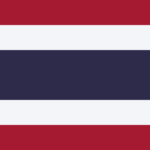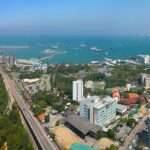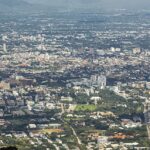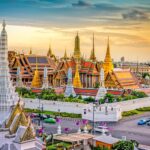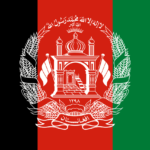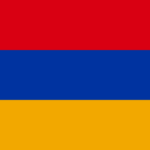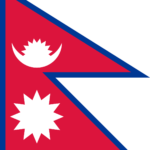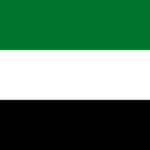Thailand
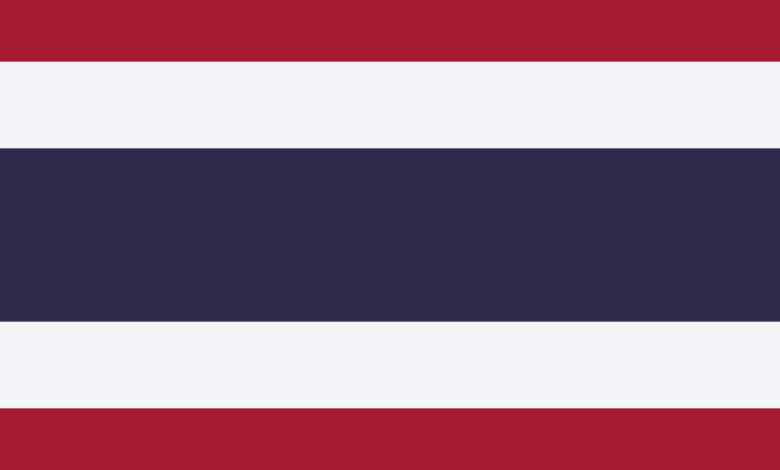
Thailand, a captivating country located in the heart of Southeast Asia, is a treasure trove of rich history, vibrant culture, and breathtaking natural landscapes. From gleaming temples and golden Buddhas to bustling markets and luxurious coastlines, Thailand offers a captivating journey for travelers seeking an unforgettable experience. In this comprehensive guide, we will delve into the fascinating history, diverse culture, and stunning natural wonders that make Thailand a must-visit destination.
| Capital
and largest city
|
Bangkok 13°45′N 100°29′E |
|---|---|
| Official language and national language |
Thai[1] |
| Spoken languages | Thai, Isan, Lanna, Dambro, Karen, Pattani Malay, Bangkok Malay, Teochew, Hokkien |
| Ethnic groups
|
|
| Religion
(2018)[2]
|
|
| Demonym(s) | Thai |
| Government | Unitary parliamentary semi-democratic[3] constitutional monarchy |
|
• Monarch
|
Vajiralongkorn (Rama X) |
| Srettha Thavisin | |
| Legislature | National Assembly |
| Senate | |
| House of Representatives | |
| Formation | |
| 1238–1448 | |
| 1351–1767 | |
| 1767–1782 | |
| 6 April 1782 | |
| 24 June 1932 | |
| 6 April 2017 | |
| Area | |
|
• Total
|
513,120 km2 (198,120 sq mi) (50th) |
|
• Water (%)
|
0.4 (2,230 km2) |
| Population | |
|
• 2022 estimate
|
|
|
• 2010 census
|
64,785,909[5] (21st) |
|
• Density
|
132.1/km2 (342.1/sq mi) (88th) |
| GDP (PPP) | 2023 estimate |
|
• Total
|
$1.591 trillion[6] (23rd) |
|
• Per capita
|
$22,675[6] (74th) |
| GDP (nominal) | 2023 estimate |
|
• Total
|
$574.231 billion[6] (27th) |
|
• Per capita
|
$8,181[6] (85th) |
| Gini (2021) | 35.1[7] medium |
| HDI (2021) | 0.800[8] very high · 66th |
| Currency | Baht (฿) (THB) |
| Time zone | UTC+7 (ICT) |
| Date format | dd/mm/yyyy (BE) |
| Driving side | left |
| Calling code | +66 |
| ISO 3166 code | TH |
| Internet TLD | |
Geography
Thailand is a country spanning 513,120 square kilometers, making it the 50th largest globally. It is slightly bigger than Spain and a bit smaller than Yemen. It comprises distinct geographic regions: the mountainous north, the northeastern Khorat Plateau, the flat Chao Phraya river valley in the center, and the narrow Kra Isthmus leading to the Malay Peninsula in the south. These regions differ in population, resources, and development, contributing to the country’s diverse physical setting.
Key waterways include the Chao Phraya and Mekong rivers, essential for agriculture and industry. The Gulf of Thailand covers 320,000 square kilometers, boosting tourism due to clear waters and coasts, while the Andaman Sea hosts luxurious resorts despite the 2004 tsunami.
Thailand’s climate varies across the country. It has a tropical savanna climate in most areas, while the south and east have a tropical monsoon climate with rainy and dry seasons. The north, northeast, central, and eastern parts experience warm weather, and the south has mild temperatures year-round with consistent rainfall.
Thailand faces climate change vulnerabilities, particularly rising sea levels and extreme weather. The country has significant biodiversity, with protected areas covering almost 31% of its territory, overseen by the National Parks, Wildlife and Plant Conservation Department. Thailand’s environmental performance has room for improvement, ranking 91 out of 180 countries in the Environmental Performance Index.
The elephant population, a national symbol, has drastically declined due to poaching for ivory, hides, and meat. Protected species like tigers and leopards also suffer from poaching, often driven by medicinal beliefs. The practice of keeping wild animals as pets further threatens various species. Despite challenges, efforts are made to conserve Thailand’s natural heritage.
Etymology
Thailand was known as Siam until 1939. The word “Thai” means “free man” or “people” in the Thai language. Thais often refer to their country as prathet Thai (the kingdom of Thailand) or mueang Thai (Thailand).
The former name Siam may have originated from Sanskrit or Mon. The name Thailand was officially adopted in 1939, during a period of nationalism in Thailand. The word “Thai” was originally used to differentiate the Thai people from the serfs in Thai society. Some rural areas in Thailand still use the word “Thai” to refer to people.
The ethnonyms Thai-Tai (or Thay-Tay) may have evolved from the etymon *k(ə)ri: ‘human being’. The Thai National Anthem refers to the Thai nation as prathet Thai (the kingdom of Thailand). The signature of King Mongkut (r. 1851–1868) reads SPPM (Somdet Phra Poramenthra Maha) Mongkut Rex Siamensium (Mongkut, King of the Siamese).
Early Kingdoms and the Rise of Sukhothai
The history of Thailand is deeply rooted in the emergence of two unified Thai kingdoms in the mid-13th century. The first of these kingdoms was Sukhothai, situated in the south-central plains. Sukhothai gained independence from the Khmer Empire and expanded its territory into present-day Burma and Laos. The kingdom flourished until the mid-15th century, leaving behind a legacy of impressive architecture and artistic achievements.
Simultaneously, the Thai Lan Na Kingdom was established in the north, with its capital at Chang Mai. However, Lan Na fell under Burmese rule in the 16th century, marking a period of foreign domination and cultural influence.
Politics
Thailand is a constitutional monarchy with a parliamentary democracy. The king is the head of state, but he has little direct power under the constitution. The real power lies with the prime minister, who is elected by both houses of parliament.
The Thai political landscape is divided into two main camps: the pro-democracy camp and the royalist-military camp. The pro-democracy camp is led by the Pheu Thai Party, which is the country’s largest political party. The Pheu Thai Party is supported by Thaksin Shinawatra, a former prime minister who was ousted in a military coup in 2006. Thaksin is a popular figure among the rural poor, but he is deeply unpopular with the Bangkok elite and the military.
The royalist-military camp is led by the Palang Pracharat Party, which is the party of choice for the Thai military. The Palang Pracharat Party is supported by the Bangkok elite and the military, but it is deeply unpopular with the rural poor.
The two camps have been locked in a political struggle for over a decade. The pro-democracy camp has won most of the elections since 2001, but the royalist-military camp has repeatedly used its power to intervene in politics and to overthrow elected governments.
The latest round of political instability began in 2014, when the military staged a coup against the government of Yingluck Shinawatra, Thaksin’s sister. The military ruled Thailand for five years, during which time it amended the constitution to give itself more power and to limit the power of elected politicians.
In 2019, Thailand held elections under the new constitution. The Pheu Thai Party won the most seats in parliament, but it did not win enough seats to form a government. The Palang Pracharat Party formed a coalition government with several smaller parties, with the support of the military.
The new government has been met with protests from the pro-democracy camp. The protesters are calling for the resignation of the prime minister and for reforms to the constitution. The government has responded by cracking down on the protests, and there have been several violent clashes between protesters and security forces.
The political situation in Thailand remains uncertain. The pro-democracy camp is determined to continue its protests, and the government is determined to maintain its grip on power. It is unclear how this conflict will be resolved, but it is clear that Thailand is facing a serious political crisis.
Here are some of the key issues that are shaping Thai politics today:
- The role of the monarchy: The monarchy is a powerful institution in Thailand, and its role in politics is a matter of debate. Some people believe that the monarchy should be above politics, while others believe that the king should play a more active role in governing the country.
- The fight for democracy: The pro-democracy camp is fighting for a more democratic Thailand, with a stronger role for elected politicians and a weaker role for the military. The royalist-military camp is opposed to these reforms, and it is determined to maintain the status quo.
- The economy: Thailand’s economy is recovering from the COVID-19 pandemic, but there are still challenges ahead. The government is facing pressure to create jobs and to reduce poverty.
- Corruption: Corruption is a major problem in Thailand, and it is a major obstacle to development. The government is under pressure to crack down on corruption, but there has been little progress so far.
The future of Thai politics is uncertain, but it is clear that the country is facing a number of serious challenges. The outcome of the current political crisis will have a major impact on Thailand’s future.
Economy, education and transport
Economy
Thailand has a mixed economy in which there is a variety of private freedom, combined with centralized economic planning and government regulation. The service sector is the largest contributor to GDP, followed by industry and agriculture.
Thailand’s economy has been growing steadily in recent years, with GDP growth averaging around 4% per year. The economy is driven by a number of factors, including strong tourism, exports, and foreign investment.
However, there are some challenges facing the Thai economy, including high levels of debt, inequality, and corruption. The government is working to address these challenges, but it is a slow process.
Education
Thailand has a universal education system that provides free education from kindergarten to high school. After high school, students can choose to attend vocational school, university, or a community college.
The quality of education in Thailand varies, but it has been improving in recent years. The government is investing in education, and there is a growing emphasis on STEM education.
Thailand has a literacy rate of 96%, which is one of the highest in Southeast Asia. However, there are still some challenges facing the education system, such as overcrowded classrooms and a lack of qualified teachers.
Transportation
Thailand has a well-developed transportation system that includes roads, railways, waterways, and airways. The road network is the most extensive, followed by the railway network.
Bangkok is the main transportation hub in Thailand. It is served by an international airport, two domestic airports, and a network of buses, trains, and taxis.
Thailand is also a major transit point for goods and people in Southeast Asia. It is connected to neighboring countries by road, rail, and air.
The transportation system in Thailand is efficient and reliable. However, there are some challenges, such as traffic congestion in Bangkok and a lack of public transportation in rural areas.
Ayutthaya: The Golden Era of Siamese Kingdom
The Ayutthaya Kingdom, which succeeded Sukhothai in the 14th century, became known as the Siamese Kingdom. During this golden era, the Thai/Siamese people consolidated their hold on central and north-central Thailand. Under the leadership of TAKSIN, a military ruler, the kingdom expanded its territory, including modern-day northern Thailand, parts of Cambodia, Laos, and the Malay Peninsula.
Despite facing military defeats and invasions from the Burmese, the Siamese Kingdom persevered and fought off further incursions in the late 1700s and early 1800s. However, the kingdom’s sovereignty was gradually eroded by Western powers in the 19th century.
Western Influence and the Loss of Sovereignty
In the mid-1800s, Thailand faced increasing pressure from Western powers, which led to the signing of trade treaties that diminished the country’s sovereignty and independence. The British and French forced Thailand to cede territories, including parts of Cambodia, Laos, and Malay regions, which had previously been under Siamese control.
These colonial influences marked a significant turning point in Thai history, as the country navigated the challenges of maintaining independence in a rapidly changing geopolitical landscape.
Thailand in the Modern Era: From Constitutional Monarchy to Political Turmoil
A bloodless revolution in 1932 brought an end to absolute monarchy in Thailand and established a constitutional monarchy. Subsequently, Thailand experienced periods of political instability, with the government splitting into pro-Japan and pro-Allied factions during World War II.
Thailand became a US treaty ally in 1954 and played a role in the Korean and Vietnam Wars. However, political turmoil persisted, with multiple coup d’etats and power struggles shaping the country’s modern history.
In recent decades, Thailand has undergone significant political transformations, including the rise and fall of Prime Minister THAKSIN Chinnawat and the military coup in 2014. The country continues to grapple with challenges and tensions as it strives for stability and democratic governance.
Captivating Attractions: Must-See Sights in Thailand
Thailand boasts an array of captivating attractions that will leave travellers in awe. From the bustling streets of Bangkok to the tranquil landscapes of Chiang Mai and the pristine beaches of Phuket, there is something for everyone in this diverse country.
Bangkok: The Vibrant Capital City
Bangkok, the bustling capital of Thailand, is a city that never sleeps. It is a vibrant metropolis where ancient temples coexist with modern skyscrapers, and traditional markets blend with luxurious shopping malls. A visit to Bangkok is incomplete without exploring the magnificent Grand Palace, home to the revered Wat Phra Kaew (Temple of the Emerald Buddha).
Chiang Mai: A Cultural Hub in the North
Nestled in the mountains of northern Thailand, Chiang Mai is a cultural hub renowned for its ancient temples, vibrant night markets, and traditional Thai craftsmanship. The city’s most iconic temple, Wat Phra That Doi Suthep, offers breathtaking views of the surrounding countryside.
Phuket: Paradise in the Andaman Sea
Phuket, Thailand’s largest island, is a tropical paradise known for its stunning beaches, crystal-clear waters, and vibrant nightlife. Whether you seek relaxation on the pristine sands of Patong Beach or thrilling water activities in Phi Phi Islands, Phuket promises an unforgettable experience.
Planning Your Trip: Tools and Resources for a Memorable Experience
Planning a trip to Thailand requires careful consideration and research to make the most of your time in this enchanting country. Fortunately, numerous tools and resources are available to help you plan a seamless and memorable journey.
Expert Guidance from Guidebooks
To truly immerse yourself in the wonders of Thailand, consider purchasing an award-winning guidebook. These comprehensive resources provide in-depth information on maps, itineraries, and expert guidance, ensuring that you don’t miss out on any hidden gems during your trip.
Online Planning Tools
In the digital age, online planning tools have become indispensable for travellers. Websites and apps offer a wealth of information, including accommodation options, transportation schedules, and recommendations for attractions and activities. Take advantage of these resources to streamline your planning process and maximize your enjoyment.
6.3 Seeking Local Advice
While guidebooks and online tools are invaluable, nothing compares to the insights and recommendations of locals. Engage with the friendly Thai people, seek their advice, and immerse yourself in the local culture for a truly authentic experience.
Exploring Thailand’s Cultural Heritage: Temples, Cuisine, and Festivals
Thailand’s rich cultural heritage is a captivating blend of ancient traditions and modern influences. From intricate temple architecture to delectable culinary delights, the country’s cultural offerings will leave a lasting impression on visitors.
Temples: Spiritual Sanctuaries
Thailand is renowned for its awe-inspiring temples, which serve as spiritual sanctuaries and architectural marvels. The Wat Arun (Temple of Dawn) in Bangkok and the Wat Rong Khun (White Temple) in Chiang Rai are just a few examples of the country’s magnificent religious sites.
Thai Cuisine: A Gastronomic Adventure
Thai cuisine is celebrated worldwide for its bold flavors, aromatic herbs, and harmonious balance of sweet, sour, spicy, and salty tastes. From the fiery delights of Tom Yum Goong (spicy shrimp soup) to the complex flavors of Massaman Curry, Thai cuisine promises a gastronomic adventure like no other.
Festivals: Vibrant Celebrations
Thailand’s vibrant festivals offer a glimpse into the country’s rich cultural tapestry. The Songkran Festival, celebrated in April, marks the Thai New Year with lively water fights and religious ceremonies. Loy Krathong, held in November, sees thousands of floating lanterns light up the night sky, creating a magical spectacle.
The Natural Wonders of Thailand: From Lush Jungles to Pristine Beaches
Thailand’s natural beauty is unparalleled, with lush jungles, towering mountains, and pristine beaches that beckon adventurers and nature lovers alike. Explore the country’s diverse ecosystems and discover the wonders that lie within.
Jungle Treks and National Parks
Embark on a jungle trek and immerse yourself in Thailand’s verdant landscapes. National parks such as Khao Yai and Doi Inthanon offer opportunities to spot exotic wildlife, hike through ancient forests, and marvel at stunning waterfalls.
Pristine Beaches and Islands
Thailand is renowned for its picture-perfect beaches and idyllic islands. From the famous shores of Phuket and Krabi to the hidden gems of Koh Lipe and Koh Chang, these coastal paradises provide the perfect setting for relaxation, water sports, and unforgettable sunsets.
Diving and Snorkeling in the Andaman Sea
The Andaman Sea is a mecca for diving and snorkelling enthusiasts, with its crystal-clear waters and vibrant marine life. Explore the underwater world of the Similan Islands, where colourful coral reefs and majestic sea creatures await.
Thailand’s Unique Wildlife: Tigers, Elephants, and Exotic Flora
Thailand’s diverse ecosystems harbour a wealth of unique wildlife, from majestic tigers and gentle elephants to rare species of plants and flowers. Embark on wildlife encounters and conservation experiences to get up close and personal with these fascinating creatures.
Tigers: The Symbol of Power and Beauty
Thailand’s national animal, the tiger, holds a special place in the country’s culture and history. Visit ethical wildlife sanctuaries such as the Tiger Temple in Kanchanaburi or the Tiger Kingdom in Chiang Mai to witness the grace and strength of these magnificent creatures.
Elephants: Gentle Giants of the Forest
Thailand is home to a significant population of elephants, considered sacred and revered in Thai culture. Engage in responsible elephant tourism at sanctuaries like the Elephant Nature Park in Chiang Mai and contribute to their conservation efforts.
Exotic Flora: A Botanical Wonderland
Thailand’s lush jungles and tropical climate support a rich diversity of plant life. From the iconic lotus flowers that symbolize purity and enlightenment to carnivorous plants like the mysterious pitcher plant, the country’s flora is a botanical wonderland waiting to be explored.
Thailand’s Future: Challenges and Opportunities
As Thailand looks towards the future, it faces a myriad of challenges and opportunities. The country strives to strike a delicate balance between preserving its cultural heritage, protecting its natural resources, and fostering sustainable development.
Tourism plays a vital role in Thailand’s economy, providing income and employment opportunities for millions of people. However, the industry must adapt to changing trends and ensure responsible tourism practices to mitigate the impact on the environment and local communities.
Thailand’s political landscape continues to evolve, with ongoing efforts to strengthen democratic governance and promote social equality. The country’s diverse population and vibrant civil society contribute to a dynamic and ever-changing society.
In conclusion, Thailand is a land of captivating history, vibrant culture, and breathtaking natural beauty. From the ancient temples of Bangkok to the pristine beaches of Phuket, this diverse country offers an unforgettable journey for every traveller. Immerse yourself in the rich heritage, savour the flavours of Thai cuisine, and marvel at the wonders of nature as you explore the land of smiles.
Embark on this extraordinary adventure and discover why Thailand truly is the “Land of the Free.”
National Anthem
The national anthem of Thailand
The national anthem of Thailand, titled “Phleng chāt Thai” in Thai, was officially adopted in its current version on December 10, 1939. It replaced “Sansoen Phra Barami,” which had been the royal anthem since 1932. The melody was composed by…
Flag
The National Flag of Thailand
Check Voyage info and Guide for Thailand Here Check the weather in Thailand Here The Thai flag, also known as the tricolour flag, features five horizontal stripes: red, white, blue, white, and red. The central blue stripe is twice as…
Cities and Towns
Pattaya City
Check Voyage info and Guide for Thailand Here Check the weather in Thailand Here Pattaya is a popular resort city in Thailand, known for its vibrant nightlife, beautiful beaches, and diverse entertainment options. Located on the eastern coast of the…
Chiang Mai
Check Voyage info and Guide for Thailand Here Check the weather in Thailand Here Chiang Mai (Chiengmai or Chiangmai), the largest city in northern Thailand and the third-largest in the nation, holds a significant place in both historical chronicles and contemporary allure.…

